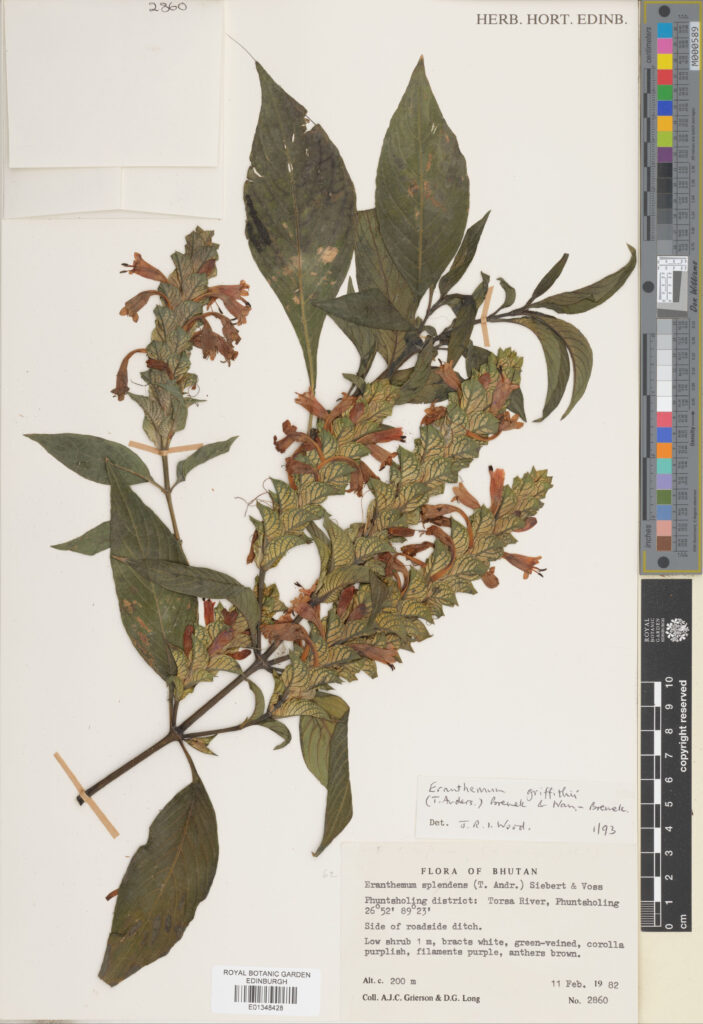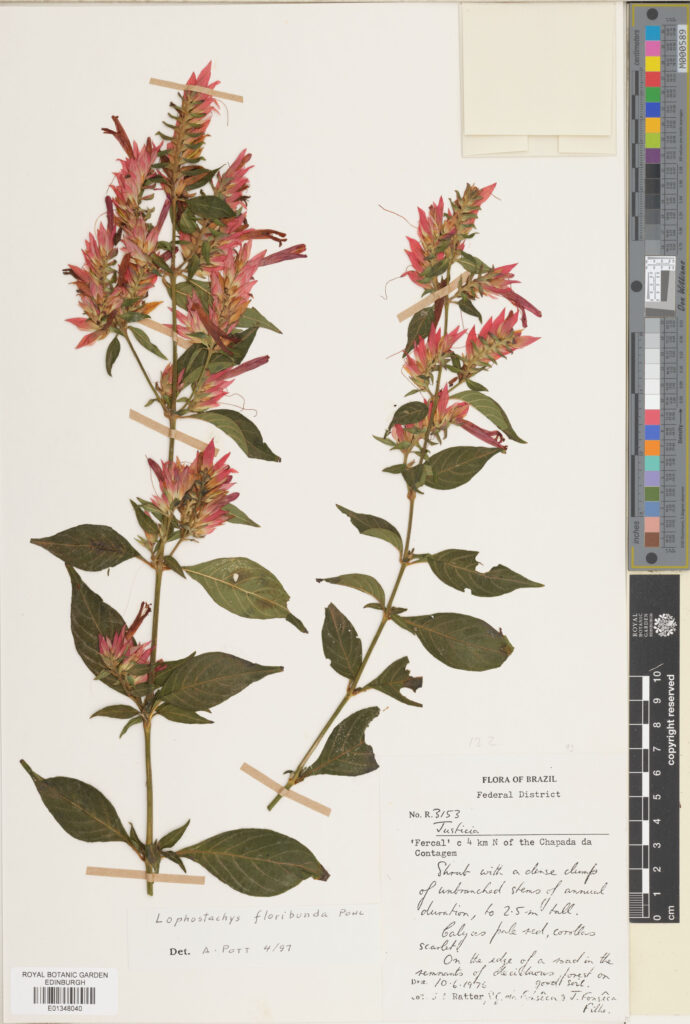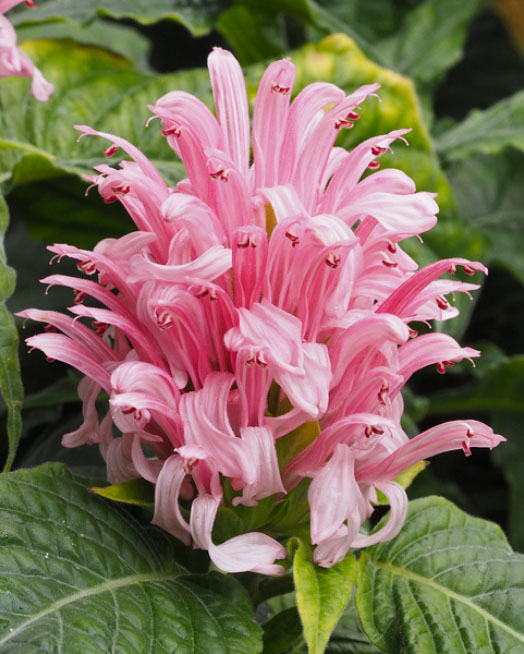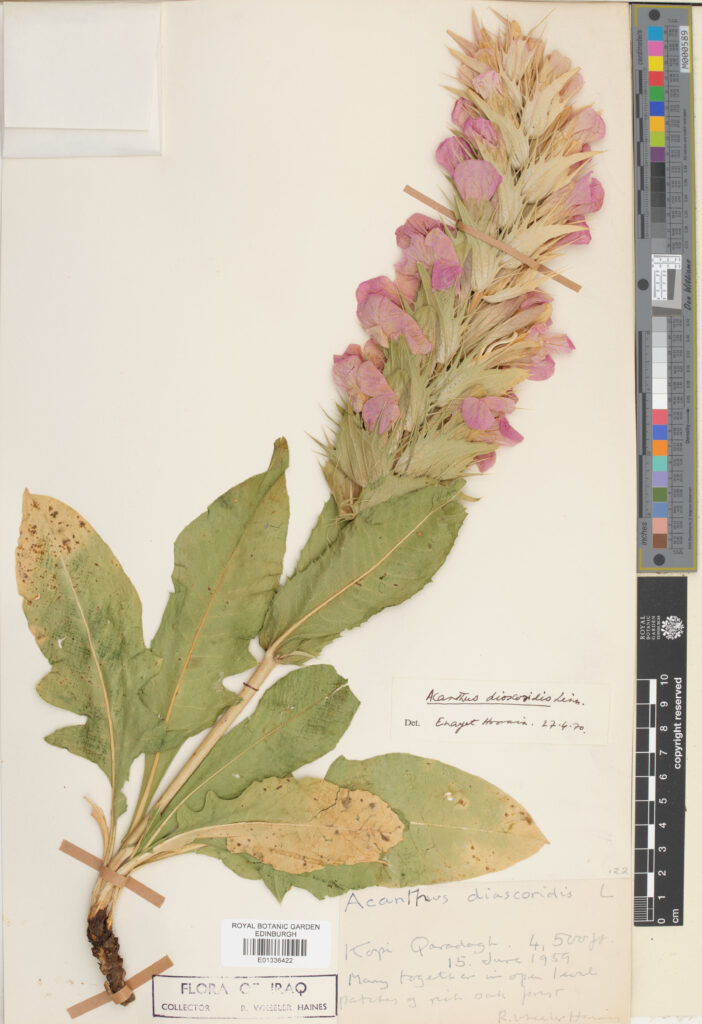The following blog was written by Rebecca Camfield a digitiser in the Herbarium.
Since 2021 we have increased our digitisation capacity with the goal of getting to 1 million specimens imaged by Autumn 2024. Each digitiser is assigned a family of plants to work through. This series of blogs will spotlight the families that have been completed by a member of the team.
The Acanthaceae comprises of 207 genera and approx. 3000 species (counts vary between 2500 and 4000). They consist mostly of tropical herbs and shrubs with large colourful bracts around each flower and swollen nodes on the stems. The main regions of diversity are Central America to Brazil, Africa and Indonesia/Malaysia. They are usually found in forests, but also in swamp, scrubland, open fields and even coastal areas.


Gardner’s will be familiar with Acanthus mollis (Bear’s breeches) with its 2m tall flowering spike. In tropical gardens Thunbergia (climbing vines with showy flowers) and Justicia (Brazillian plume flower) are commonly found.
Avicennia is a genus of mangrove trees that was placed in Verbenaceae, then its own family, but molecular phylogenetics show it is related to Acanthaceae. It is included in this family in our herbaria.
Economic use of the Acanthaceae is mostly horticultural, but it is also used for medicinal purposes and a blue dye can be obtained from the leaves of Strobilanthes cusia.


Our collections
We have 11,580 specimens of Acanthaceae in our collection. Before mass digitisation of the family there were 5,462 specimens catalogued, so mass digitisation has doubled the number of specimens on our catalogue. We currently hold 521 types of Acanthaceae
The specimens can be viewed here.
Top 5 regions
| No. of Specimens | Herbarium Filing Region |
| 2,464 | India, Pakistan and Bangladesh |
| 1,384 | South Africa |
| 963 | Tropical Africa |
| 952 | Inner China, Korea and Taiwan |
| 733 | West Asia – Arabian Peninsula |
We have a large number of collections from the Arabian Peninsular due to the work of the Centre for Middle Eastern Plants (CMEP).
Based on the distribution of the family, it seems that our collections from Central and South America maybe under represented in the collection.
Top 5 Genera
| No. of Specimens | Genus |
| 1,587 | Strobilanthes |
| 535 | Ruellia |
| 518 | Thunbergia |
| 430 | Justicia |
| 367 | Dicliptera |
Unsusprisingly Strobilanthes is the largest genus as several genera have been synonymised within it.
Our collections lack representation of several general, such as Chamaeranthemum from the tropical Americas, Neriacanthus from the Caribbean and South America, Clistax is native to Brazil, Hoverdenia is monotypic from Mexico, and Sebastiano-schaueria is also monotypic and endemic to NE Brazil. This may again be due to the family potentially needing better representation in our collections from the Americas.


